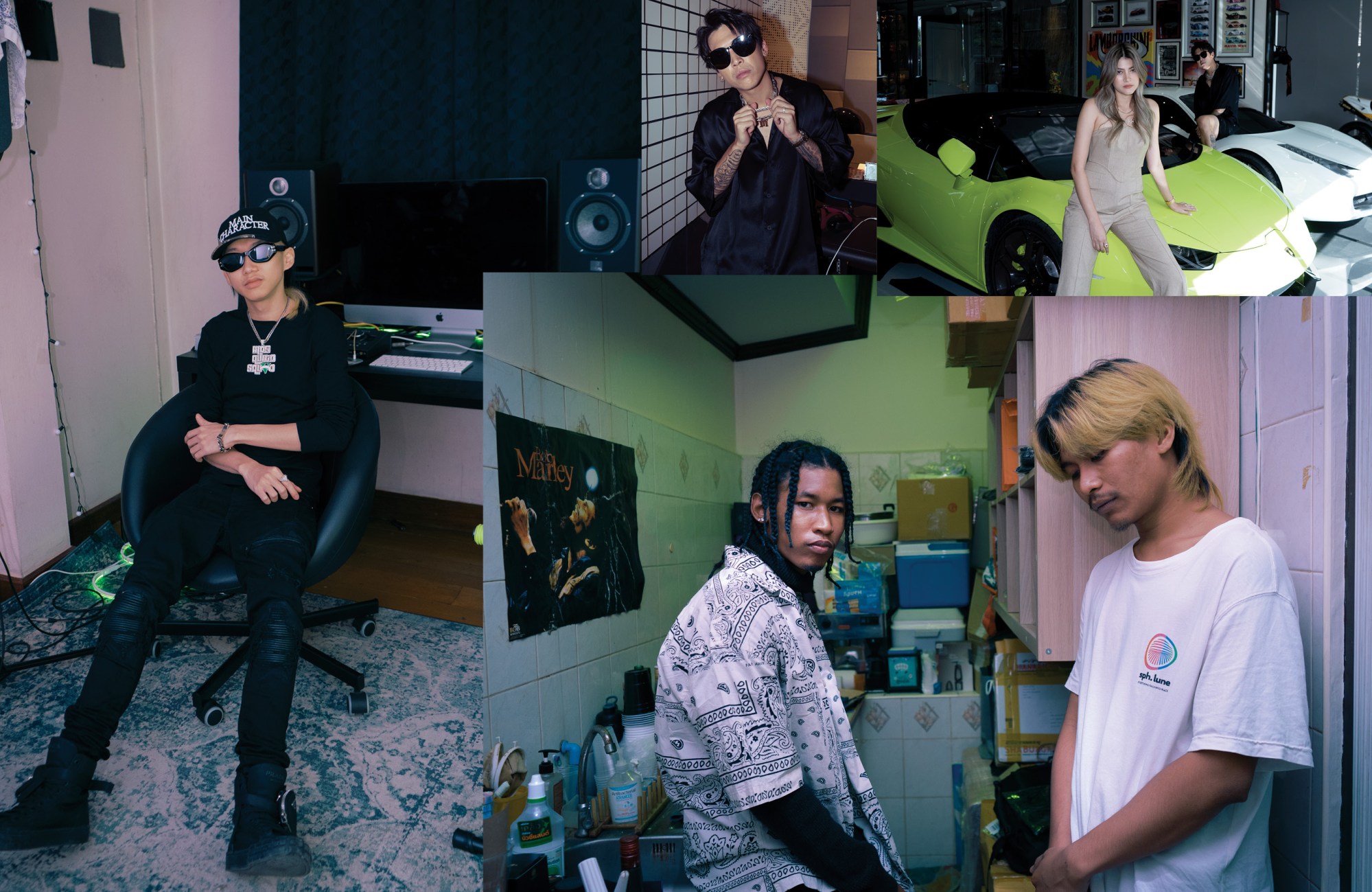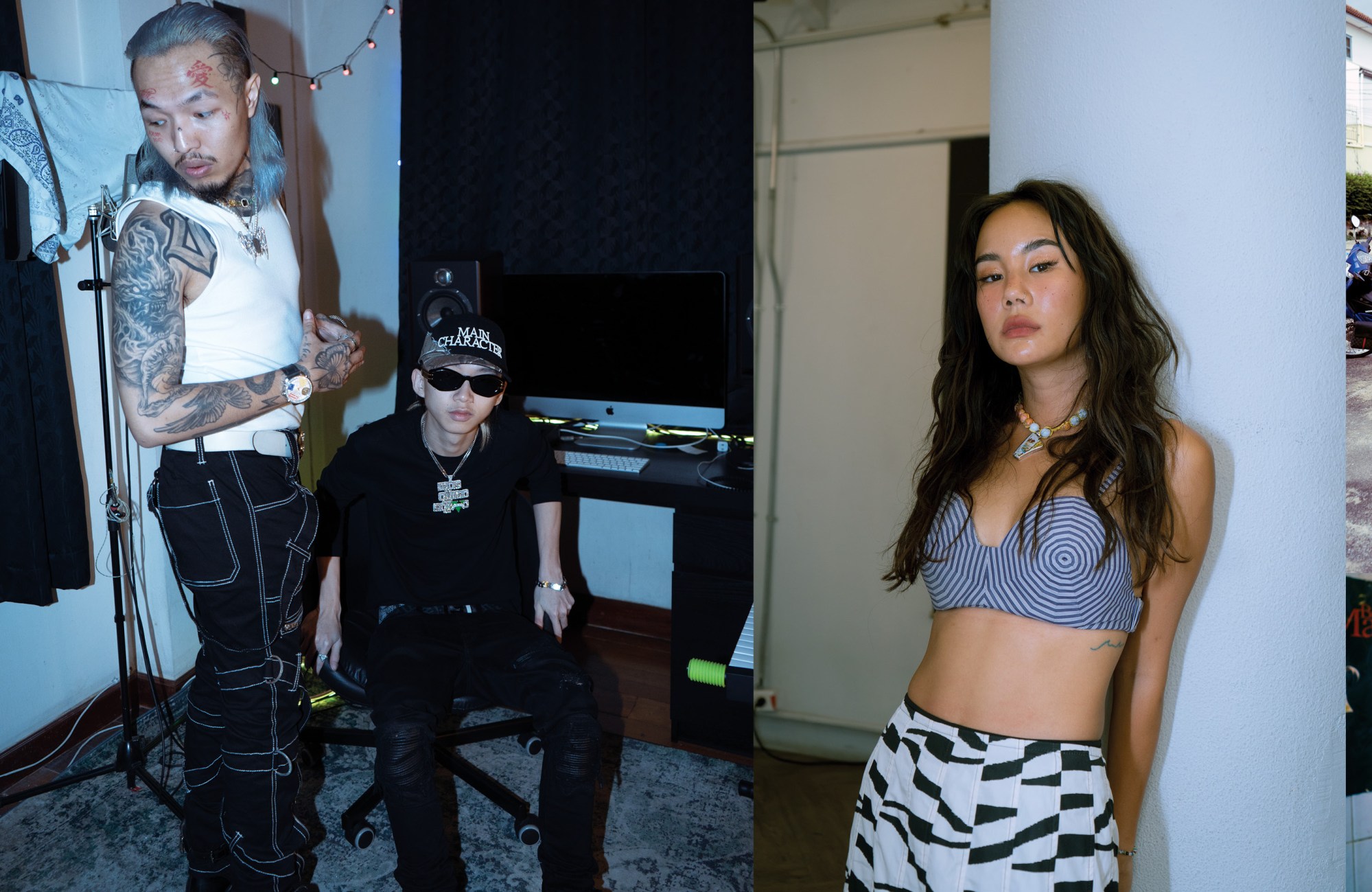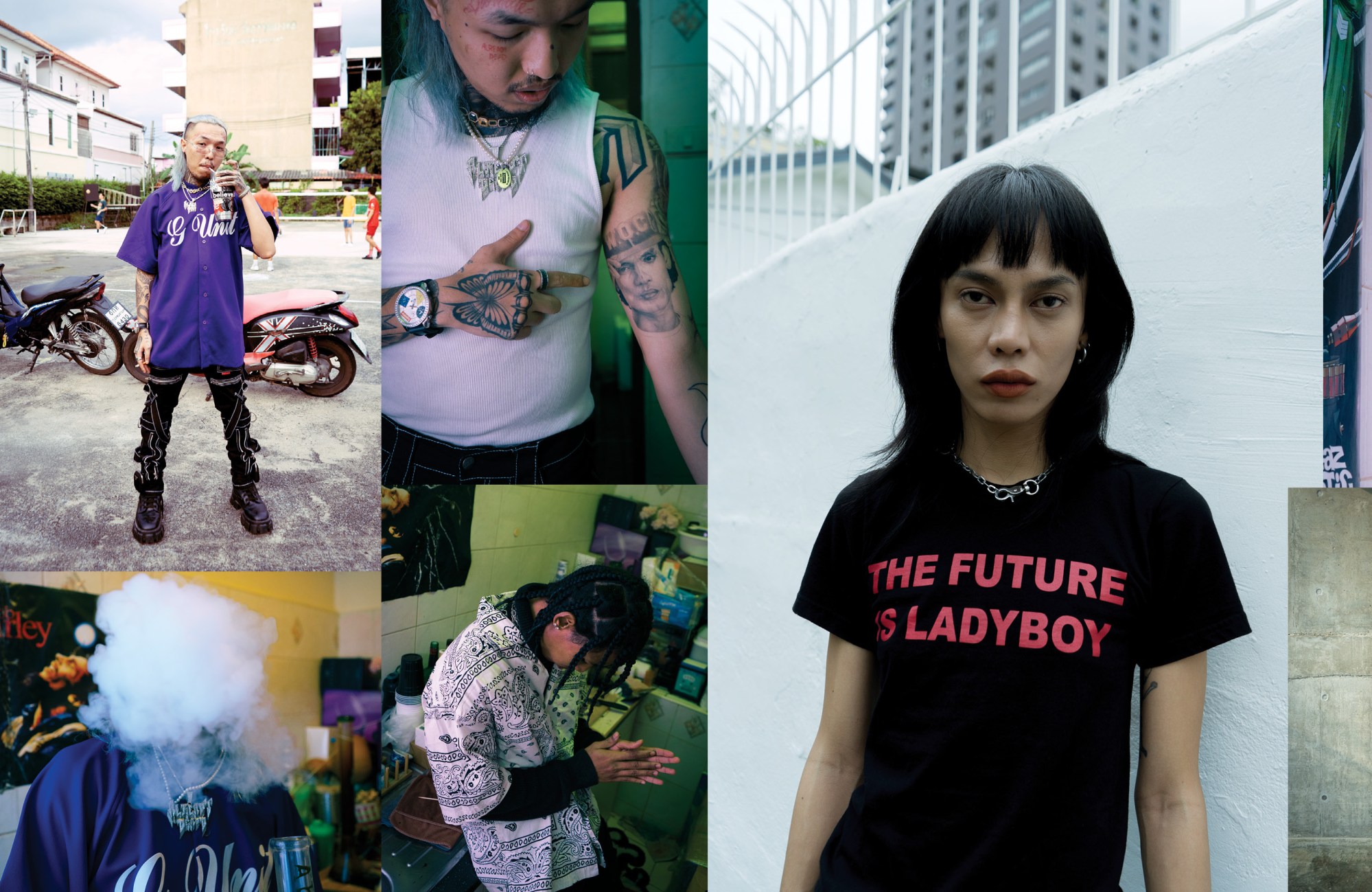This story originally appeared in i-D’s The Royalty Issue, no. 370, Winter 2022. Order your copy here.
In 1939, Suntaraphorn, the first ever popular music band in Thailand formed. The music they played was known as “luk krung” (“luk” means child and “krung” means city) and they used and adapted western instruments and musical styles, from jazz to classical, in their songs.
It was controversial – within a conservative cultural climate, they offered the first major injection of western influence into the country’s music scene. Before Suntaraphorn, Thailand was most familiar with a music style called luk thung (thung, in this context, meaning countryside): a more rural genre usually characterised by soft, sad beats and poetic storytelling that speaks directly to the audience; the songs, for example, might narrate the story of a country girl going to Bangkok to find work and how she now misses her home.

But really, it was in the 90s when Thai pop culture started to reflect broader influences in western music and fashion – like when Joey Boy (Apisit Opsasaimlikit) signed to Bakery Music, a label that pioneered independent music in the country, and introduced hip-hop to Thailand for the first time. Now, almost twenty years later, with easy access to the Internet, young Thai artists are drawing inspiration from anywhere and everywhere in the world, and the Thai music industry is blossoming into something unique.
As visible through the evolution of luk krung, Thai artists have historically faced criticism for disrupting musical traditions, which are deep-rooted in Thai culture. But young Thai artists are now exploring their own musical history in their work. Take, for example, VKL – a rapper from the Isaan region in north east Thailand. He proudly uses his local dialect and the sound of local instruments and culture in his songs – when, to the majority of Thailand, those sounds are stereotyped as the language of an uneducated rural population. To combine Isaan culture with modern American hip-hop is a provocative move – but “just like when you have East Coast, West Coast, or reggaeton, there are different sounds and characters in different parts of the world,” VKL says. “I use Isaan because that’s my culture.”
Subscribe to i-D NEWSFLASH. A weekly newsletter delivered to your inbox on Fridays.
Modern Thai music reflects modern Thai life, in all its diversity. Rapper Youngohm’s album, Bangkok Legacy, was inspired by his life living in Bangkok and attending a public school inside a temple alongside children from the city’s working class neighbourhoods. “Bangkok has a very strong character as a city and this album is the legacy of all Bangkok kids,” Youngohm says.
Bangkok is a uniquely vibrant place and, on its party circuit, you can find pretty much anything you desire, whether that’s BDSM parties or underground hip-hop nights. “Pouring our culture into our music also helps the rest of the world to better understand our culture,” says rapper SONOFO, who went to the same school as Youngohm and has been collaborating with him ever since.

Twenty-year-old rapper Diamond has 500,000 followers on Instagram and suggests that, because of the rise in the importance of social media in the last decade, young artists don’t even need to rely on conservative mainstream media platforms anymore. He notes that it’s quite common for artists to have over a million views on YouTube, and still remain unknown to the mainstream. “Yes, we can make it without the mass media – but that doesn’t mean we wouldn’t want their help, too,” he says.
“Hip-hop people used to get made fun of in Thailand,” says NGAZ, a 25-year old half-Thai, half-Ghanian musician. “The majority of people were more used to pop or rock music, and rap music was very niche back then, but now we’re seeing more and more people trying to follow the street or hip hop fashions.”

Mainstream pop music in Thailand is usually dominated by soft love songs and cheesy dance tracks. Anything more experimental than that often gets ignored, meaning that those making it need to find their own ways to release music. “Being an independent artist means there’s no pressure to grow revenue – but at the same time you need to find the sweet spot where you can create and capitalise on it,” says O Thongthai, founder of O Thongthai jewellery, a favourite of the Thai music scene as well as musicians across the globe. “Creation is the priority,” she says.
For 29-year-old fashion designer, DJ, and party organiser Nalin Satearrujikanon, the best thing about the scene is the diversity of Thailand’s under-the-radar parties. Nalin usually hosts parties at go-go bars in Bangkok’s red-light district, Patpong, instead of the high-end clubs in expensive partying neighbourhoods like Thonglor.
“Yes, we can make it without the mass media – but that doesn’t mean we wouldn’t want their help, too.” Diamond MQT
On top of playing a pivotal role in the city’s underground music scene, Nalin is also a model and runs an Instagram street casting account where she celebrates people who may not adhere to mainstream Thai beauty standards, which align with wider Asian beauty standards of being skinny and having lighter skin. She has also been paving the way for many of the younger generation of trans kids in Thailand who may feel like the society puts them in a box or tries to tell them what they can or can’t be. “I think everyone is beautiful in their own way, even if they don’t fit in with society’s expectations of beauty,” Nalin says. She is also the brain behind a series of viral T-shirts bearing the slogan: The Future is Ladyboy. “I wanted to reclaim this word, get rid of the stigma around it, and make it fashionable,” she explains. “Yes, I’m a ladyboy, and I’m proud, thank you.”
Thai society remains, broadly speaking, fairly conservative – but sometimes that works in the favour of the artists who have something to rebel against and pitch their creativity and freedom against. The Thai-Italian musician Pavida Moriggi, who performs under the name SILVY, has been trying to make a name for herself as a singer since she was fifteen, competing in a TV idol competition called The Star. During her time on screen, she faced a barrage of criticisms about her weight, with many saying that it would be impossible for her to become famous because of the way she looked. “They tried to mould me – and even though I knew it wasn’t me because I really wanted to be in this scene, I let them,” SILVY says. “It took me years to finally come to peace with myself.”

SILVY challenges the typical Thai beauty standards in her music, and many of her songs reflect when the industry used to tell her that she wouldn’t be successful unless she did what was told. “Right now, Thai girls are much more confident than before,” SILVY notes.“Thai girls are not afraid of slut-shaming anymore, and if you watch a music video by a female Thai artist, she will dress however she wants now, because she feels sexy and she is going to wear whatever she wants.”
Like almost everywhere, Bangkok’s youth suffered during lockdowns, when clubs were closed and they had nowhere to go to express themselves. “I feel like things start to pick up again after the pandemic,” O says hopefully, and there are signs the country’s conservative culture is changing. “Thailand just legalised weed so the new thing is dispensaries everywhere. Clubs are open and popping. There are more bars in town playing interesting music. People are starting to come out and party like pre-pandemic.” If the past and present of Thai music is anything to go by, the future is bound to be exciting.
Credits
Photography Joyce Chen
Fashion O Thongthai
Models Pok Mindset, Margie Balenciaga, Youngohm, Diamond MQT, NGAZ, Jay Sanofo, Jaokhun, Jaonaay, Notep, Silvy, and Nalin
All jewellery O THONGTHAI


